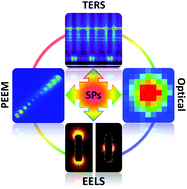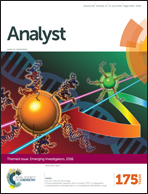Visualizing surface plasmons with photons, photoelectrons, and electrons
Abstract
Both photons and electrons may be used to excite surface plasmon polaritons, the collective charge density fluctuations at the surface of metal nanostructures. By virtue of their nanoscopic and dissipative nature, a detailed characterization of surface plasmon (SP) eigenmodes in real space-time ultimately requires joint nanometer spatial and femtosecond temporal resolution. The latter realization has driven significant developments in the past few years, aimed at interrogating both localized and propagating SP modes. In this mini-review, we briefly highlight different techniques employed by our own groups to visualize the enhanced electric fields associated with SPs. Specifically, we discuss recent hyperspectral optical microscopy, tip-enhanced Raman nano-spectroscopy, nonlinear photoemission electron microscopy, as well as correlated scanning transmission electron microscopy-electron energy loss spectroscopy measurements targeting prototypical plasmonic nanostructures and constructs. Through selected practical examples from our own laboratories, we examine the information content in multidimensional images recorded by taking advantage of each of the aforementioned techniques. In effect, we illustrate how SPs can be visualized at the ultimate limits of space and time.

- This article is part of the themed collection: Emerging Investigators

 Please wait while we load your content...
Please wait while we load your content...